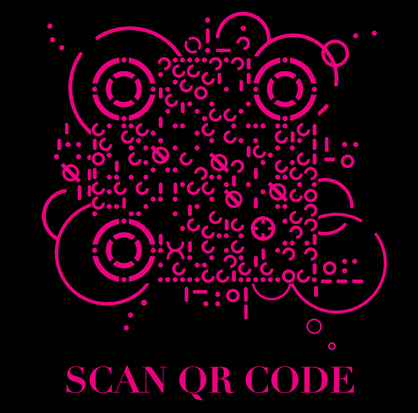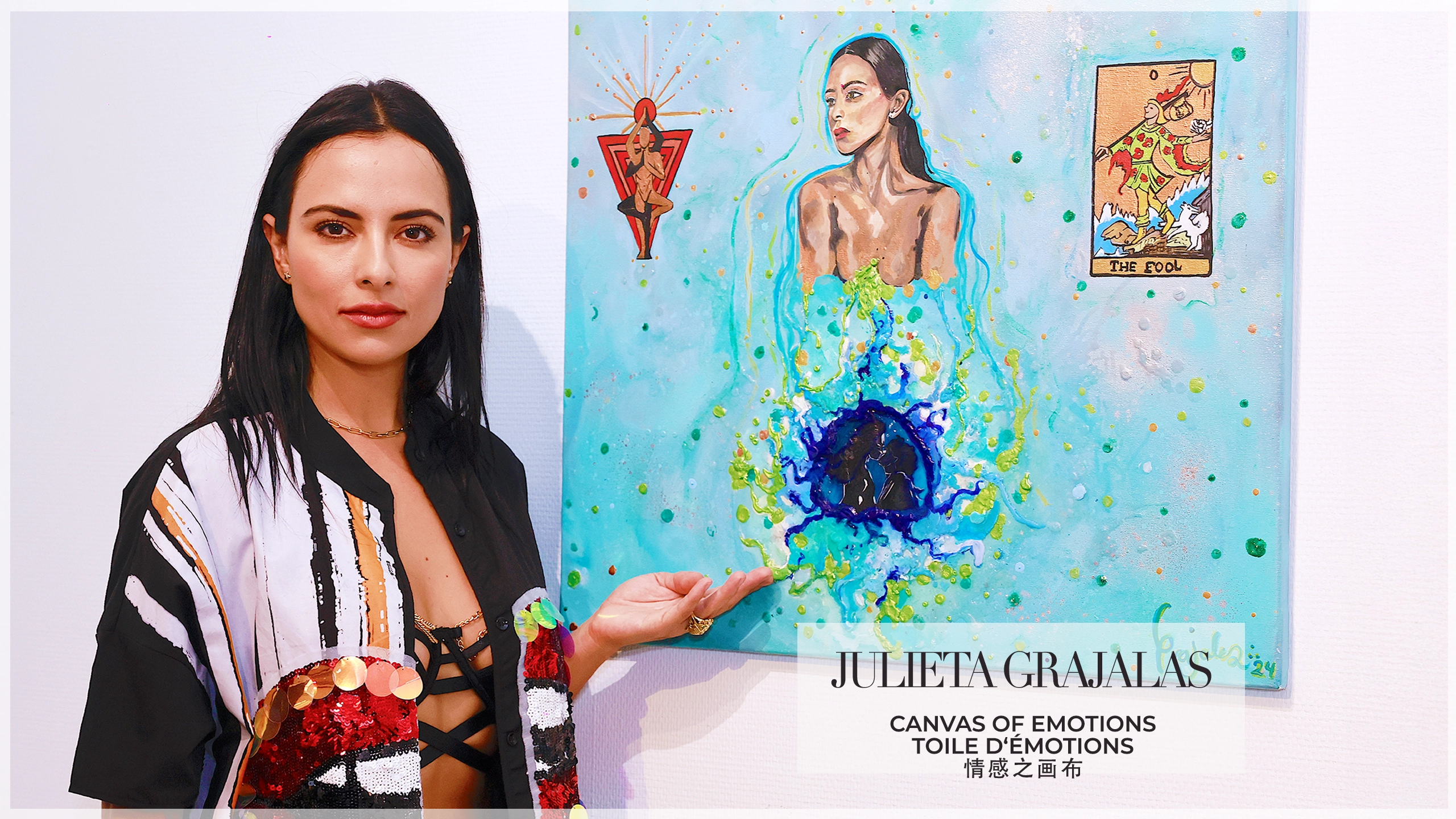

Editor-In-Chief
MeeKar Lim
International Fashion Editor
Suna Moya
Editor-At-Large
Zhang XiaoXiao

Please contact:
media-works@qcegmag.com
or
WeChat:QCEGMAG_Contact
QCEG MAG is a publication covering a selection of news in fashion, beauty, accessories, celebrities, LIVING ARTS, sports TRAVELS and relating videos around the world. Our portal is currently available in English and Chinese Languages for our international readers & viewers.
Get to know our professional team and their passionate creativity at QCEGPro.com



CANVAS OF EMOTIONS
Julieta Grajales reveals her canvas of emotions — blending acting, painting, and raw honesty in paris with courage, soul, and vibrant expression.

There are artists who perform, and there are artists who bare their soul. Julieta Grajales belongs to the latter. A celebrated Mexican actress and multidisciplinary creator, Julieta has long captivated audiences with her bold, visceral presence on screen. Her performances in acclaimed series such as El Chema, El Señor de los Cielos, La Bandida, and Lotería del Crimen are charged with rare intensity—an emotional honesty that lingers like an unspoken truth. Trained in method acting in Barcelona and Mexico, she has mastered the delicate art of vulnerability, portraying characters that feel fiercely real.
Yet Julieta’s world does not end beneath the glow of studio lights. It expands—quietly, vividly—onto canvas. Beyond the roles and scripts, she paints. For Julieta, painting is not a pastime but a lifeline: a deeply intimate ritual where colour becomes confession and texture becomes emotion. Her first exhibition in Paris, held at the Galerie L’Esprit d’Escalier, was more than a milestone; it was a revelation. Within those frames, we witnessed Julieta unmasked: raw, tender, and profoundly human.
Her paintings echo the way she acts—with instinct, with courage, with soul. They are quiet dialogues between light and shadow, colour and feeling—poems without words that linger long after you have left the room. Each piece draws us closer, whispering truths only art can hold.
And then there is the woman herself—fearless, magnetic, unapologetically authentic. An outspoken advocate for individuality and LGBTQ+ visibility, Julieta lives her truth with grace and defiance. Her work—whether on screen or on canvas—carries the same message: to exist fully, to love openly, to create without compromise.
We had the privilege of stepping into this world during her Paris exhibition—a moment of pure intimacy with an artist who refuses to be confined. After witnessing the depth of her craft, both as an actress and a painter, we sat down with Julieta to uncover the stories, struggles, and passions that shape her art—and her life.
— SUNA MOYA
JULIETA GRAJALES
CANVAS OF EMOTIONS Julieta Grajales reveals her canvas of emotions — blending acting, painting, and raw honesty in paris with courage, soul, and vibrant expression.

Suna Moya: Your on-screen performances are bold and visceral. How does that emotional depth translate onto the canvas when you paint?
Julieta Grajales:As an actress, I feel more at ease because I inhabit other skins and bring them to life through me. For me, being an artist has always been a therapeutic act — a way to explore my emotions and pour them onto the screen until I am completely emptied. That’s why I hunger for experiences; I feed on them and transform that energy into inspiration, hoping to touch others through my art.
Painting, however, has been a very different journey. I began as a child, without technique or knowledge, simply as a way to escape difficult realities. Painting allowed me to immerse myself in a world of fantasy and return to life with a more hopeful spirit. Over time, it became an intimate practice, almost a form of deep meditation.
Perhaps my paintings are not commercial, and they may not please everyone, but they are authentic. They speak of my spirit — my emotional processes, my loves, my pain, my transformations, desires, fantasies, and abysses. Showing my work has always terrified me because it feels like stripping myself bare before an audience, without masks, revealing both my light and my darkness in constant evolution.
SUNA MOYA: Do you feel more exposed as an actress inhabiting a character, or as a painter revealing your inner world on a canvas?
Julieta Grajales:As an actress, even though I give myself completely, I always have the protection of a character — another skin, another story. My emotions intertwine with theirs, but there is still a veil that shields me.
As a painter, I feel far more exposed because there are no filters, no scripts. What I place on the canvas is my inner world — my abysses and my light. Painting is like laying the soul bare before others, without masks. That vulnerability is so much more intense.
SUNA MOYA: If your paintings could speak, what would they reveal about you that your acting never could?
Julieta Grajales: They would speak of the things I dare not say aloud — of my silences, my contradictions. Acting allows me to embody universal emotions through a character, but painting reveals what is most secret: my wounds, my fantasies, my shadows, and my most intimate desires.
If my canvases could speak, they would say that behind the actress is a vulnerable woman searching to understand herself — someone who transforms pain into colour, love into brushstrokes, and her abysses into inner landscapes. They are confessions I could never express on stage, but in painting, they find absolute freedom.
SUNA MOYA: Have you ever painted an emotion that no character could embody? Which one?
Julieta Grajales: Yes. I’ve painted emotions that no character could embody because they are too abstract or contradictory to fit into a script. I recall a time when I felt torn between hope and despair, as if I were living two realities at once. I captured that duality on a canvas full of colours that contradicted each other — repelling and embracing at the same time.
A character can express a defined emotion, but painting allows me to portray invisible states — sensations without a name — a secret language between my inner world and the viewer.
SUNA MOYA: What did it mean to you — personally and artistically — to present your first painting exhibition in Paris, a city so steeped in artistic history?
Julieta Grajales: It felt like a dream I would never have dared to write. Personally, it meant reconciling with my inner child — the one who painted in silence as a refuge and never imagined her works would travel so far. It was an act of healing and courage: revealing my inner world in a city that breathes art at every corner.
Artistically, it was both a gift and a great responsibility. Paris is steeped in history, shaped by great masters who transformed the way we see life through their canvases. Bringing my work there was not about comparison, but about an intimate dialogue with that tradition — placing my voice, with all its fragility and strength, in a city that honours art in every form.
SUNA MOYA: Was there a moment during the exhibition when someone connected with your work in a way that surprised or deeply moved you?
Julieta Grajales: Yes, and it marked me deeply. A woman stood silently before one of my pieces for a long time, and then suddenly began to cry. She later approached me and said she recognised a pain she was going through in that painting — but also a light that gave her hope.
That moment moved me profoundly because I realised painting, beyond being an intimate act, can become a mirror for others. It reminded me why art is so powerful: it unites our vulnerabilities and makes us feel less alone.
SUNA MOYA: How did preparing for the gallery compare with working on a film or series? Did it feel more solitary, more visceral?
Julieta Grajales: It was completely different. In film and television, there is always a team — directors, actors, technicians — a collective energy that sustains you. Painting is the opposite: profoundly solitary. It is just you, the canvas, and yourself — without a script to guide you or a director to show the way.
It felt more visceral because every decision depended on me — the colours, the strokes, what I wanted to reveal or conceal. At the same time, that solitude was a gift because it forced me to listen to myself honestly and trust my instincts. If acting transforms me to give life to a character, painting strips me bare to reveal my most intimate self.
I am deeply grateful to the gallery Lespritdescalier, that magical space where Marco Valvé and Mateo invited me to exhibit. It was a dream come true — to dare to share my inner world.
SUNA MOYA: Icons such as Frida Kahlo and Leonora Carrington paved the way for Mexican women artists. Did their legacy influence your voice or confidence when preparing this exhibition?
Julieta Grajales: Absolutely. I deeply admire Frida Kahlo because, despite the physical and emotional pain she endured, she never allowed it to define her creativity or her freedom. Her life was an act of constant audacity — breaking conventions, questioning gender roles, fearlessly exposing her vulnerability, and transforming her suffering into powerful, universal art.
Frida Kahlo and Leonora Carrington, each in her own way, taught me that art can be a space of absolute freedom — where even pain and the incomprehensible can become beauty. They opened the door for Mexican women to express themselves without asking permission, without fear of revealing vulnerability or strength.
When preparing my exhibition, I thought a great deal about that legacy. It wasn’t about imitation, but about honouring their courage. Knowing that women before me broke moulds gave me the confidence to show my own voice — with my wounds, my fantasies, and my contradictions. I believe their spirit accompanied me in every canvas, reminding me that being authentic is also an act of resistance.
SUNA MOYA: Does your art come from silence or chaos? What usually sparks the first stroke of a painting?
Julieta Grajales: From both. Sometimes it comes from inner noise — intense emotions that demand release. Other times, it emerges from stillness — moments of introspection when everything within me calms and settles.
The first stroke usually arises from an emotion I cannot contain — anger, desire, unexpected joy, or even a memory demanding to be freed. It is a visceral, almost instinctive impulse that connects me instantly to the deepest part of my inner world.
SUNA MOYA: You’ve described painting as a form of emotional release. Have you ever cried, laughed, or felt the urge to abandon a piece while creating it? And how do you know when a painting is truly finished?
Julieta Grajales: What a great question! I am only just learning to let go. At first, I was very demanding of myself, harshly critical — constantly comparing myself with great artists with formal training and established careers. I panicked at the thought of anyone ever seeing my work. That fear kept me from sharing my paintings for a long time.
Over time, I’ve learnt to trust myself more. I understood that we are all unique, and no one can experience my inner world the way I do. I could not “prostitute” that universe of fantasy with comparisons or outside expectations. Now, I cry, laugh, or even feel like abandoning a piece — but I embrace that as part of the process. A painting ends when I feel it has said everything it needed to say about me at that moment.